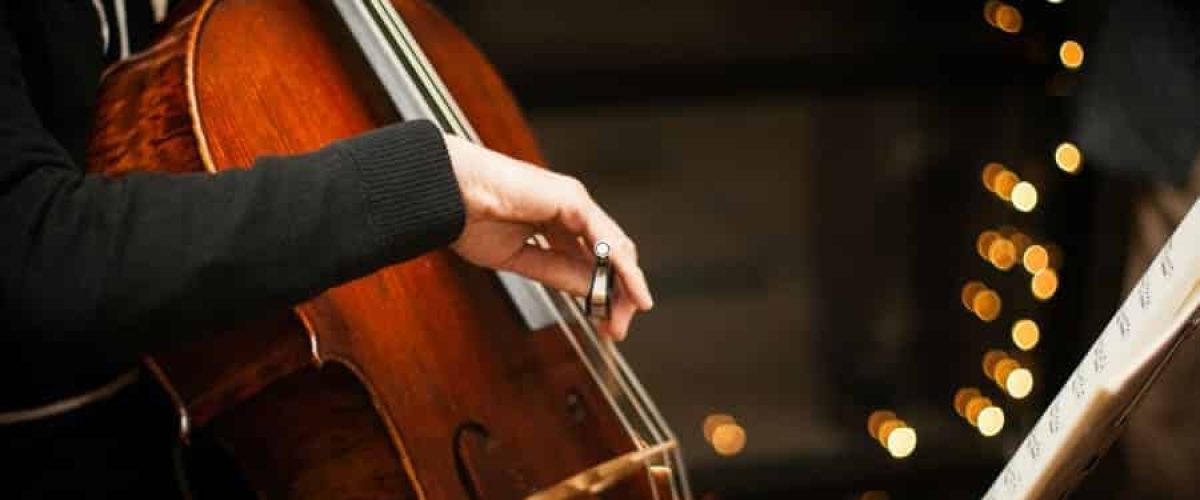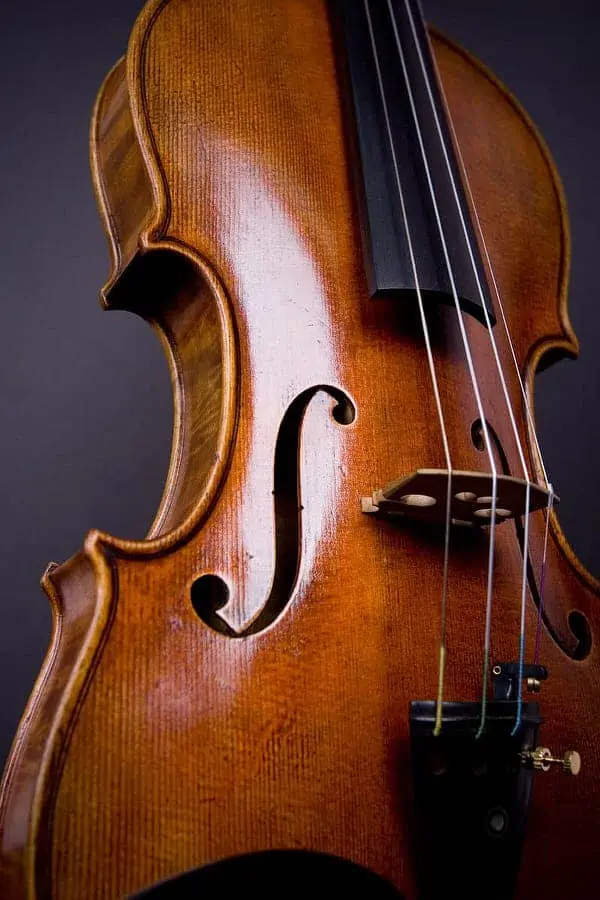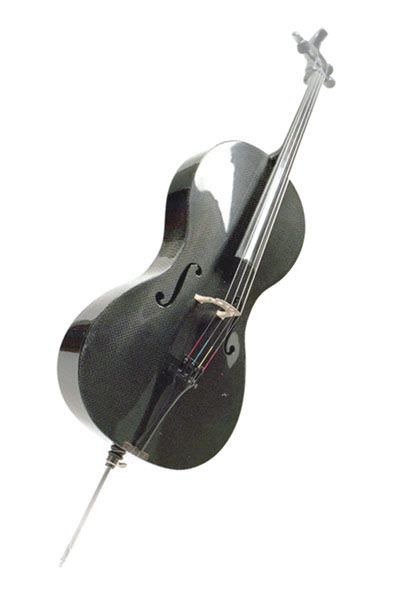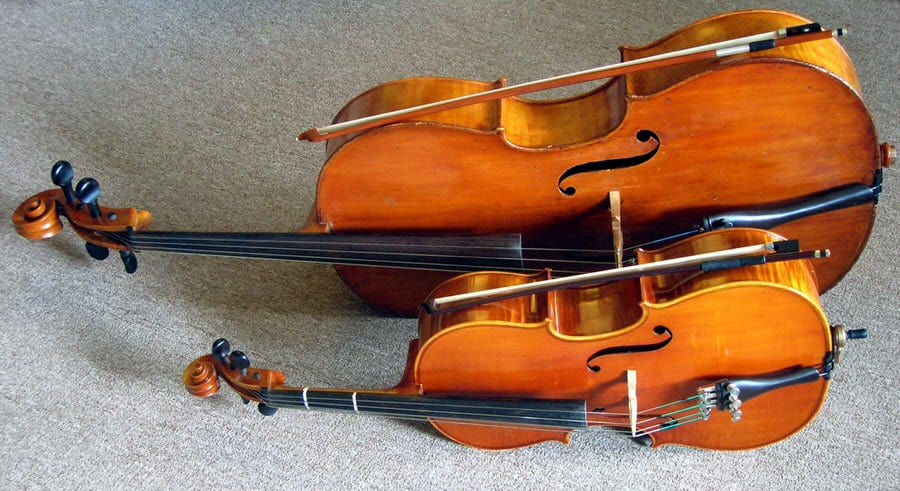How To Choose A Cello
Good job! You are about to buy your first Cello...
Selecting a cello to buy can feel like a thrilling adventure, though a tad daunting too. Part of our series that helps novices get their feet wet in the world of cello, this bit sets you up to kick off your musical journey just right.

Things you should know before buying your first Cello
There are many different types and varieties of the cello. The main things to think about are size, price and quality. It is also important to think about what sort of music you will be playing and where it will be stored.

Types of Cello
Whilst the standard wooden cello is the most common, there are also electric and carbon fibre versions. The style of music you want to play will help decide which type of cello would be most suitable.
Wooden Cello

If you are interested in performing mostly classical music, then a wooden cello is the way to go. A handmade wooden cello will also be more responsive than a factory-made one.
Electric Cello

For the regular session player, an electric cello would be best as you can connect it to an amplifier and therefore match your volume to that of the band.
Carbon Fibre

If you will be playing outdoors a lot – such as at festivals – then a carbon fibre cello may be for you as they are more resilient to changes in heat and humidity.
Sizes of Cello

Having the right size cello is crucial to the successful development of any cellist, especially younger children. If you pick an instrument that’s too small, playing will feel cramped and restricted. Playing on an instrument that’s too big could become strenuous and frustrating. Therefore choosing the correct size instrument is an important step that must be considered carefully.
Cellos come in a variety of sizes, with a full size being appropriate for the majority of adults. There are then fractional sizes such as ½, ¼, ⅛, 1/10 and even 1/16. These fractional sizes are great for children and others who may struggle with a full size.
A ⅞ size was historically called “Ladies’ Cellos”, and is slightly smaller than the standard full size. ⅞ size cellos are beneficial to those “with smaller hands as well as those with arthritic or other painful conditions”.
For more detailed guidance on choosing the right size cello, please see “What Size Cello Do I Need?”
Let's talk about budget
Cellos can vary greatly in price – from little over £100 to over £15 million! Therefore deciding on a budget is very important when buying a cello.
Wooden Cello
As a beginner, you may find that there are a number of packages which would be suitable for you. These will often come with both a cello and a bow as well as a case. These can be a great starting point with a full size typically costing £100 – £500 for a wooden cello. But bear in mind that as you progress you will probably need to upgrade to a more expensive cello.
Electric Cello
Electric cellos are cheaper than carbon fibre cellos with prices from £100 – £2000. But bear in mind that to make the most of your instrument, you will also need to buy all of the accompanying equipment.
Carbon Fibre
Carbon fibre cellos are naturally more expensive as the material used is more expensive. However, there is a limit to their price due to the fact that many cellists simply do not consider them as good overall as wooden cellos. For a good carbon fibre cello, you can expect to pay £1000 – £5000.
About the Author
Ellen Porter
Ellen Porter is a cellist based in North Yorkshire, UK. She is a graduate of the Royal Northern College of Music where she studied with Eduardo Vassallo and Jennifer Langridge. Later, she completed postgraduate training with Johan Stern in Gothenburg, Sweden, where she specialised in orchestral performance. Ellen has performed throughout the UK and Europe as a member of several orchestras including the Swedish National Orchestra Academy, Berlin Opera Academy, Piccadilly Symphony Orchestra and Baroque in the North. She has also performed in masterclasses with cellists Hannah Roberts, Guy Johnston, Gillian Thoday, Emma Ferrand, Miklos Perenyi and Peter Somodari; and previously studied with David Smith
Ellen has always been passionate about communicating and sharing her passion for music with others. She currently works for North Yorkshire Music Education Hub as an Instrumental Teacher having previously worked as a supply music teacher in Sweden. In 2021, she completed the Ambassador Programme with the Benedetti Foundation, and completed articles for Ted's-List. She has also worked with Global Grooves as part of the LIME Music UK 2017 Festival, the National Children's Orchestras of Great Britain, RNCM Young Basses and the Halle Youth Ensembles team.
Ellen currently plays on a modern Italian style cello dated 2012 and a French bow in the style of Tubbs. She was supported in her further musical study by The Edna Newill Charitable Trust, to whom she is forever grateful.
Apart from music Ellen enjoys learning languages, travelling and going on long walks with her dog, Digby!
Other posts by this author
Ellen has always been passionate about communicating and sharing her passion for music with others. She currently works for North Yorkshire Music Education Hub as an Instrumental Teacher having previously worked as a supply music teacher in Sweden. In 2021, she completed the Ambassador Programme with the Benedetti Foundation, and completed articles for Ted's-List. She has also worked with Global Grooves as part of the LIME Music UK 2017 Festival, the National Children's Orchestras of Great Britain, RNCM Young Basses and the Halle Youth Ensembles team.
Ellen currently plays on a modern Italian style cello dated 2012 and a French bow in the style of Tubbs. She was supported in her further musical study by The Edna Newill Charitable Trust, to whom she is forever grateful.
Apart from music Ellen enjoys learning languages, travelling and going on long walks with her dog, Digby!
Quality
Wooden cellos are most commonly made out of spruce and maple. Generally, an older cello is considered more valuable as the wood has had time to mature and adapt to the shape of the cello, allowing for greater responsiveness and possibility for subtleties.
However there have been some great advancements in cello making over the last 20-30 years, and you can now find a much younger cello that is just as good as an older and more expensive one.
Traditionally ebony is used for the fingerboard, tailpiece and pegs, but other woods can be used. Finetuning pegs, made from hi-tech plastic, can make tuning with the pegs much easier and less stressful for less experienced players. Spikes are usually made from metal, however, carbon fibre ones are quickly becoming more common, due to how light they are.
Whilst handmade cellos will naturally all be very different, so to can factory-made ones, so it is important to try a cello before buying it, as even the cheapest factory made cellos can sound great if set up correctly and used in combination with a good bow and strings.
Many shops do not stock carbon fibre or electric cellos and it may be difficult to try one before you buy it. Therefore, when buying a carbon fibre or electric cello, it is best to read reviews and buy from well-known brands such as Yamaha.
Bows, cases and other accessories
Buying a cello wouldn’t be complete without also purchasing a bow and a case to put it all in!
Bows
Cases
Strings
Rosin
Spike Holder
Bows
Bows are sometimes sold alongside the cello, especially if you are looking at a beginner package. If buying a bow separately it is best to go to a shop and try lots of bows in combination with your cello. Bows have a multitude of factors that make each one unique – from weight to material of the stick, to the shape of the stick – so it’s important to try a variety.
Wooden bows are often made from Brazilwood, with the most common type called Pernambuco. Over the last 20 years, carbon fibre and fiberglass bows have become more popular due to a shortage of Pernambuco as well as their strong, resilient nature.
Cases
If you are planning on playing your cello anywhere other than your front room, you are going to need a case! Cases can cost up to £1500, and be as light as 2.5kg, but understanding the levels of protection can help you choose the case that is right for you!
Padded bags or soft cases will protect your cello from some bumps and are often sold as part of a beginner package. Hard foam or semi-rigid cases will provide extra protection and sometimes come with a hygrometer. Fiberglass or carbon fibre cases will protect your cello from even the biggest knocks, as well as small changes in temperature and humidity.
Strings
Which strings you use, is another thing to consider when buying a cello. Whilst the strings that are on the cello when it is sold to you will normally be fine, it is possible to increase the quality of your sound simply by changing the strings. Popular brands include D’Addario, Thomastik, Pirastro and Larsen.
Rosin
Rosin is needed for your bow. We love the D’Addario Kaplan Premium Rosin – it’s by far the best rosin on the market, and is very reasonably priced.
Spike Holder
A spike holder will come in helpful to prevent the spike from sliding about on the floor and damaging any nice floorboards or expensive carpets. These cost around £10 – £30 and last for years. The most reliable ones have a strap that you can attach to the chair.
As you progress through your cello journey, you will find that there are more options and possibilities to explore and trying things out for yourself is always the best way to choose something new. But if you really don’t know, then ask for advice from your teacher or another professional, they will be able to help.
D'Addario Kaplan
The best rosin on the market
$
11
/£8
-
BONUS: It comes with a premium case
-
BONUS: Case designed for one-handed use
CHECK PRICE >
More features:
Uses the original recipe handed down from Ladislav Kaplan
Low dust
Uses the original recipe handed down from Ladislav Kaplan
Low dust
10/10
How To Choose A Cello - Summary
The cello is a beautiful instrument, with the right size and budget and practice, of course, it can convert a simple person into a musical genius in no time. Using this guide, choosing the right cello for you makes it much easier. Of course, you can always reach out to our Ted’s List community at Facebook so you can talk to like-minded people who can give you the advice in choosing the perfect cello for you.
Gain Access To All Sorts Of Interesting Musical Items
4-Feature Friday does just what it says on the tin; sends you an email every Friday with four of the most amazing things I’ve found that week.
It may consist of special freebies or possibilities to interact with me, musical instruments, books, cool gadgets, music and songs, new techniques/tricks, and — obviously — a variety of fun musical things I dig up from around the globe.
Receive access now by clicking below.
Read the next post in this series:




